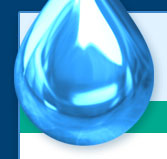Other than the eye chart, the slit lamp is the examination you are most likely to remember from your eye doctor's office. You put your chin on the thingymabob, rest your forehead on the other thingymabob, and obediently follow directions such as "Stare at my left ear" while a bright light is shone in your eye.
Through a slit lamp the doctor can examine ocular tissue at the front of the eye including the cornea, iris and lens. Severe surface dryness will be visible under the slitlamp. Your doctor may also place fluorescein or another dye in your eye to help identify dry spots while you refrain from blinking.
For the chronic dry eye patient, particularly those with normal aqueous tear production, the slit lamp examination can be a chronically frustrating experience. Tear dysfunction significant enough to cause a lot of discomfort can yet yield no obvious visible findings during a slit lamp examination. This is where further testing becomes important and a patient questionnaire like OSDI can be useful in helping patients communicate effectively with their doctor. |



